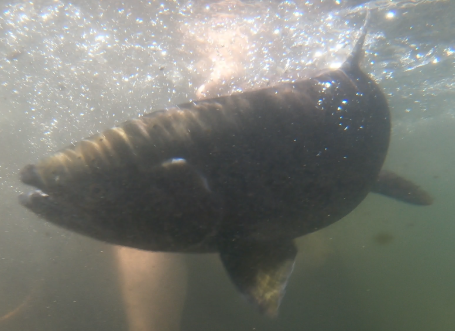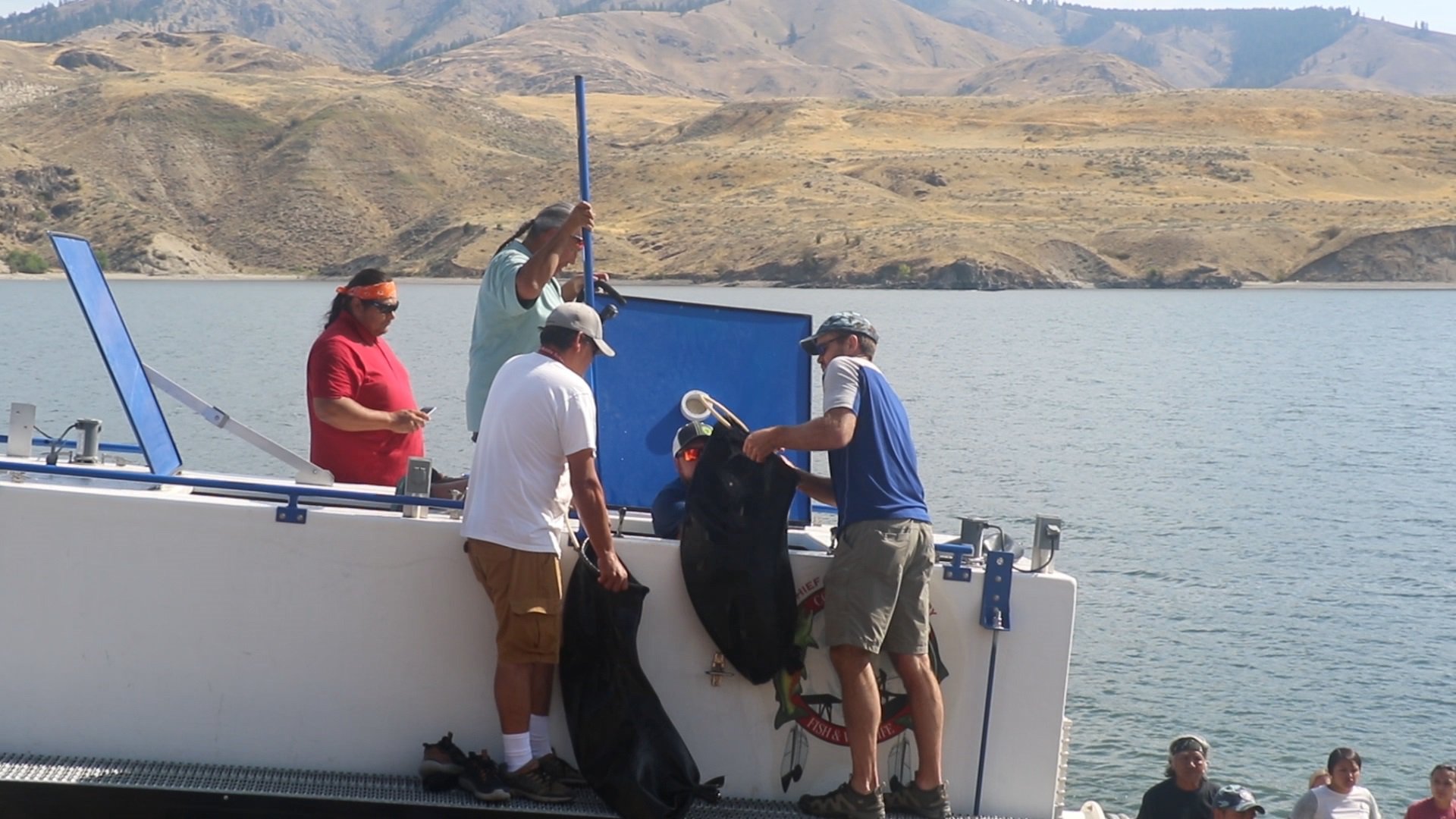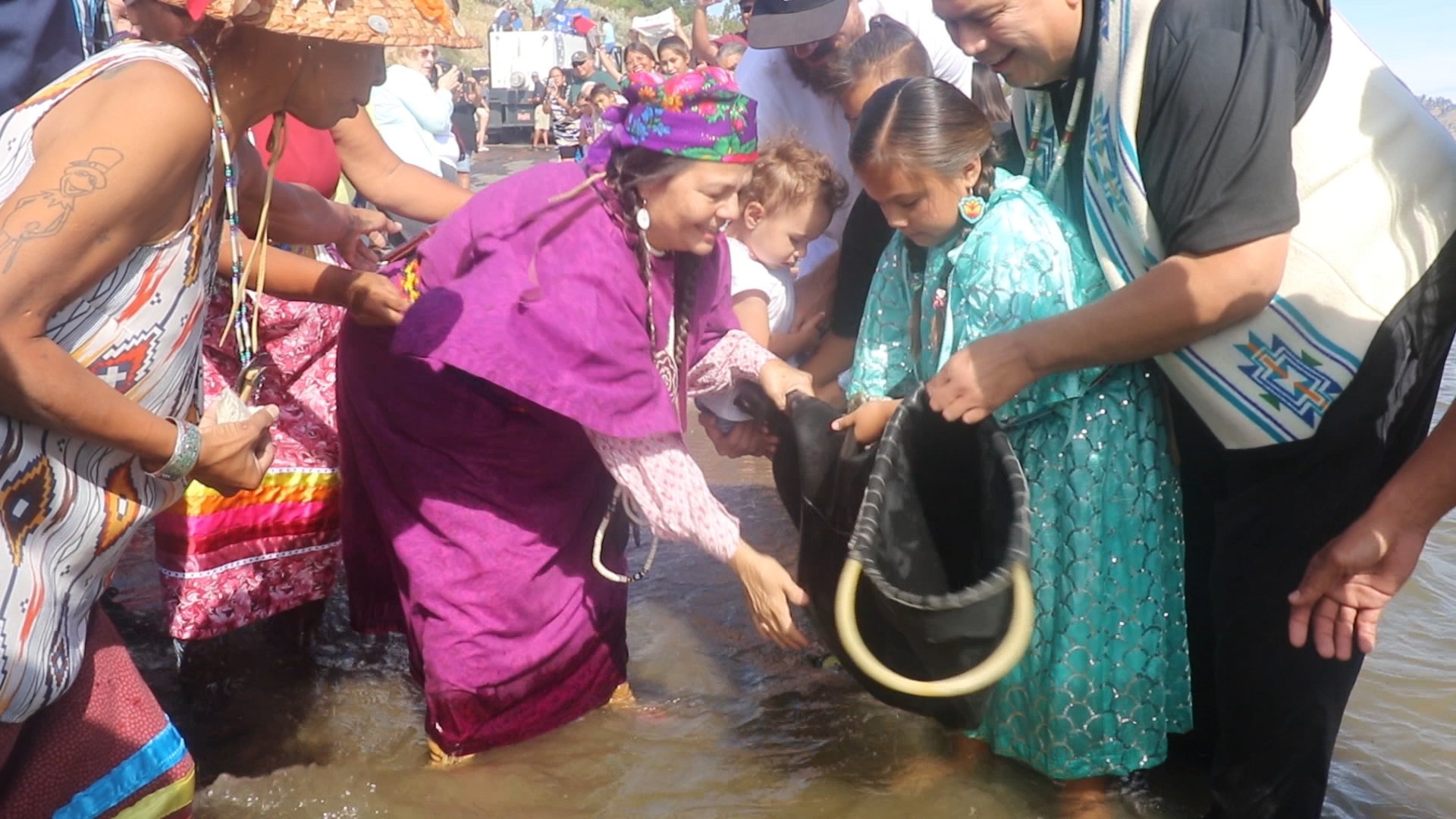Colville Tribes Release Salmon into Blocked Areas for Science and Celebration
- January 16, 2021
- John Harrison

Salmon returned to the Columbia River above Chief Joseph and Grand Coulee dams for the first time in 80 years in 2019 and 2020, with help from the Confederated Tribes of the Colville Reservation.
In 2019, the Tribes conducted a series of ceremonies to release adult summer Chinook salmon into Lake Rufus Woods, the reservoir behind Chief Joseph Dam, and Lake Roosevelt, the reservoir behind Grand Coulee.
“Each began with songs, prayers and speeches, and the festivities also included traditional foods, drummers, and even a canoe landing near Kettle Falls,” Casey Baldwin, a research scientist for the Tribes, told the Council’s Fish and Wildlife Committee at its January meeting, reporting on the releases.
Summer Chinook salmon from Wells Hatchery were brought to several release sites in tank trucks, loaded individually into special carriers, and then passed to the water along a chain of people. “It was a hands-on opportunity for everyone to be involved,” Baldwin said. The releases had a scientific purpose, to learn how fish adapt to the habitat above the two dams, and also a cultural purpose, to educate and involve the tribal membership, youth, the general public, and other partners and stakeholders about salmon reintroduction into the blocked area, he said.
The Council’s Columbia River Basin Fish and Wildlife Program calls for evaluating the reintroduction of anadromous fish into areas where their passage has been blocked by dams, and establishes a three-phase approach to study and test reintroduction and ultimately proceed if it is deemed feasible. The Tribes are leading that effort, which is intended to establish the scientific foundation for reintroduction through analyses of habitat and fish production potential. The Tribes also reserved the right to release salmon for cultural and educational purposes apart from the Council’s process. Baldwin said the two efforts are parallel and consistent. For example, fish released for cultural and educational purposes are tagged, and studies of the tagged fish will help assess the effectiveness of those releases and also inform the Council’s reintroduction effort.

The tribes released 90 fish at three sites during the August 2019 ceremonies, and then later released an additional 152 fish upstream of Chief Joseph Dam. Some of those were tagged to track their movements and behavior. Interestingly, a few spawned right at the dam, where the river flows over a shallow gravel bar. Six redds, or egg nests, were found there, Baldwin said.
Analysis of the 2019 releases showed that, as expected, the fish naturally migrated upstream into the current, but they also moved up and down the reservoir behind Chief Joseph. About three-quarters of the fish survived into October, when summer Chinook usually spawn. Only two fish were observed downstream of Chief Joseph Dam as of mid-October 2019, indicating a relatively low initial fallback rate. While comprehensive spawning surveys were not conducted, biologists did note the six redds near Chief Joseph Dam and one other in the Nespelem River, a tributary to the reservoir behind Chief Joseph.
In 2020, large gatherings like the 2019 release celebrations were not possible because of the pandemic, but the Tribes released 50 salmon upstream of Grand Coulee fitted with acoustic tags. Data on the released fish was recorded at dozens of receivers in the lake, which are in place to assess releases of hatchery-raised sturgeon. The released salmon were fitted with the same type of tag as the sturgeon. Data are still being analyzed, but one bit of information so far is that approximately 20 fish were detected North of the U.S. border in British Columbia, and several others were detected downstream of Chief Joseph.
In 2020, the Tribes also released 100 adult summer Chinook into the Sanpoil River, a tributary to Lake Roosevelt. Following those August releases, a total of 36 redds were counted in October. If the spawning was successful, “we may be able to catch some smolts next spring,” Baldwin said.
Jarred Erickson, chairman of the Tribes’ Natural Resources Committee, said that as a man in his 30s he had never seen salmon above Grand Coulee in his lifetime, and neither had his mother.
“But the elders knew,” Erickson said. “It was really emotional for our people. We will do whatever it takes, no matter the cost or resources, to see salmon back. I hope I see it in my lifetime.”




